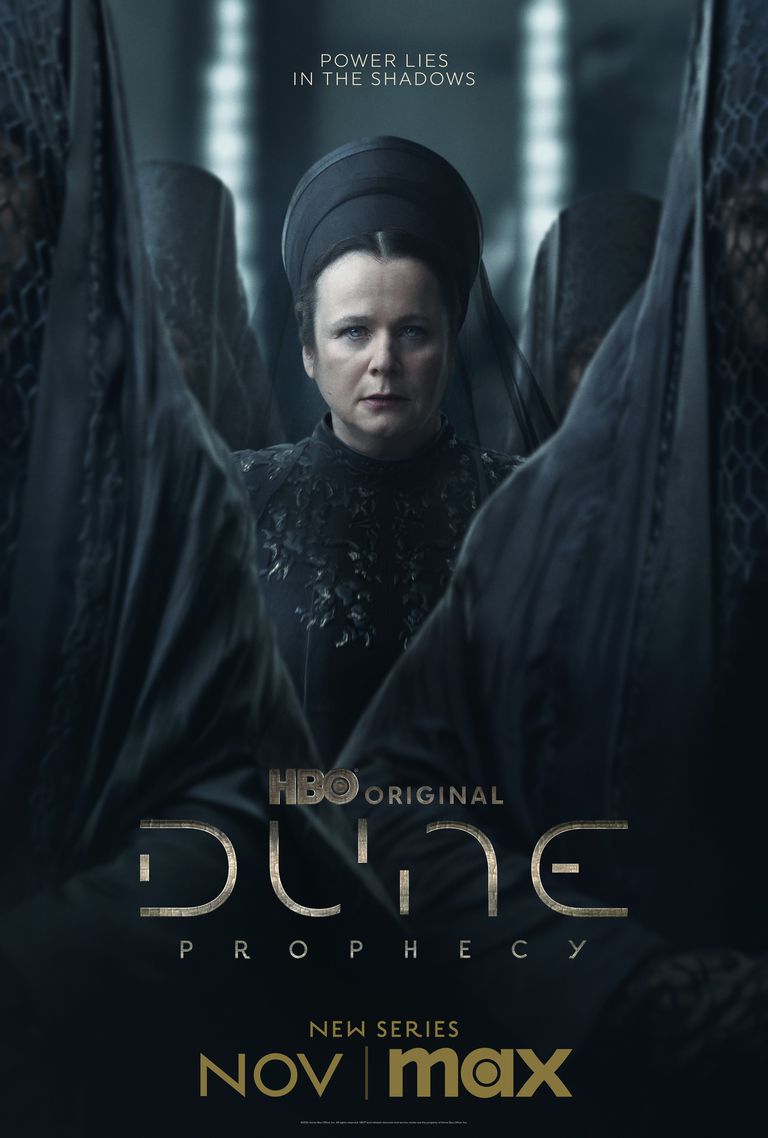Key Takeaways
- “The Agony” is a scary ritual in Dune: Prophecy reenacting a Reverend Mother’s death through poison ingestion.
- A prophecy foretells a despot rising up against the Sisterhood, leading to desperate measures.
- The aftermath of “The Agony” reveals past deceptions and potential consequences for the Sisterhood.
In the world of Dune, there is no shortage of unsettling and unpleasant ordeals that a person has to go through to prove their worth. First, Paul Atreides must stick his hand in a box and endure horrible pain under threat of horrible death by gom jabbar. Now, the prequel seriesDune: Prophecy has introduced its own, much more scary-sounding ritual known as “The Agony.”
First seen in the second episode, “Two Wolves,” “The Agony” is a test that normally takes years to prepare for, but one character is made to endure it without much preparation on account of the ominous situation the Sisterhood seems to find themselves in. But what is “The Agony,” and why would anyone willingly subject themselves to it?
Why It’s Called “The Agony”
Anything with a name like “The Agony” is probably going to be unpleasant. True to form, what Dune: Prophecy shows the audience doesn’t seem appealing. In short, “The Agony” is a reenactment of the death of the Sisterhood’s original Reverend Mother, Raquella. For the ritual, the Truthsayer drinks poison and enters an underworld in order to commune with the spirits of former sisters. With proper training and control over their minds, sisters can find their way back to the land of the living, but this is usually something that only more seasoned Truthsayers would attempt.

Related
How Dune: Prophecy Makes Arrakis’ Presence Felt Despite Its Physical Absence
Although HBO’s Dune: Prophecy rarely visits Arrakis, the spice-rich desert planet’s presence is still profoundly felt by its characters.
But in Dune: Prophecy, the sisters can’t afford to wait that long. Shortly before her death, Raquella warned a young Valya Harkonnen of a prophecy known as Tiran-Arafel, in which it is said that a tyrannical despot will rise up and destroy the Sisterhood. It seems that now, 30 years later, the prophecy is starting to play out. First, a sister named Kasha, Truthsayer to Emperor Corrino, has a frightening vision about an upcoming wedding that the Sisterhood has orchestrated. Next thing they know, she’s dead, burned alive from the inside out. Desperate for answers, Valya coerces her sister Tula into compelling one of their trainees, a young woman named Lila, into undergoing the process.
Normally, having such an inexperienced Truthsayer-in-training attempt “The Agony” would be a death sentence. However, Lila is no ordinary recruit. As it turns out, Lila is Raquella’s great-great-grandaughter, and Tula believes she has innate abilities that will allow her to survive. While Valya leaves to see what she can find out about Kasha’s death, Tula is left to convince Lila to go through with the procedure. She gives Lila the choice of whether to do it — or at least the illusion of choice. While Lila fears she’s not ready, Tula sweetens the deal by suggesting she might find her dead mother on the other side. Eager to find out for herself, Lila agrees to attempt “The Agony.”
What “The Agony” Could Mean Going Forward
While the episode leaves the aftermath of “The Agony” a mystery for now, things don’t seem to go according to Valya and Tula’s plans. Lila takes the poison and enters the netherworld as planned, leading to a striking visual of a vast, cavern-like system with spectral figures of dead sisters in shrouds. Lila doesn’t find her great-great grandmother, but instead finds her great-grandmother Dorotea, who reveals the truth to her: that Valya used “the voice” to compel her to kill herself all those years ago. She uses Lila’s body to tell the Harkonnens:
You stole my future. Now I’m taking your hope.
Following this declaration, the spirits overwhelm Lila and seem to trap her on the other side as her body lies lifeless. Time will tell if Lila is truly stuck among the dead forever, or if she’ll be able to find her inner strength and fight her way back to the living world.
Lila’s ritual does reveal one interesting piece of information about a “revenant” and “a weapon born in war” that will have some part to play. However, this seems like information that Valya finds out on her own by going to meet with Desmond Hart, the former soldier who miraculously survived a Sandworm attack on Arrakis that left him with some unique abilities. When she confronts him and learns that he was behind Kasha’s death, she tries to use “The Voice” to get him to cut his own throat, but he proves surprisingly resistant to her methods.
It seems that the Harkonnen sisters have more problems than they thought. Valya compelled Dorotea to take her own life 30 years ago in order to protect the Sisterhood’s controversial breeding program, where they use selective genetics to create future leaders that will be more complacent and receptive to their influence. While it was Raquella’s original idea, her daughter refused to go along with it, leading Valya to remove her from the equation rather than risk the future of the order. Now, it seems that the sisters’ past machinations are coming back to bite them. It’s possible that the actions taken by Valya to protect the Sisterhood might be the very thing that leads to their downfall.
Fans will have to keep watching to see what impact “The Agony” will have, but it seems safe to say that it didn’t go how Valya and Tula hoped. It’s unlikely that the series would set Lila up as a pivotal character only to kill her off so quickly, but it’s also possible the creators are trying to subvert audience expectations by being merciless with their characters. At only six episodes, the series has a lot of ground to cover and not much time, so they may be trying to pick up the pace. “Two Wolves” represents an escalation of the story, and it’s exciting to see how it plays out.















Leave a Reply